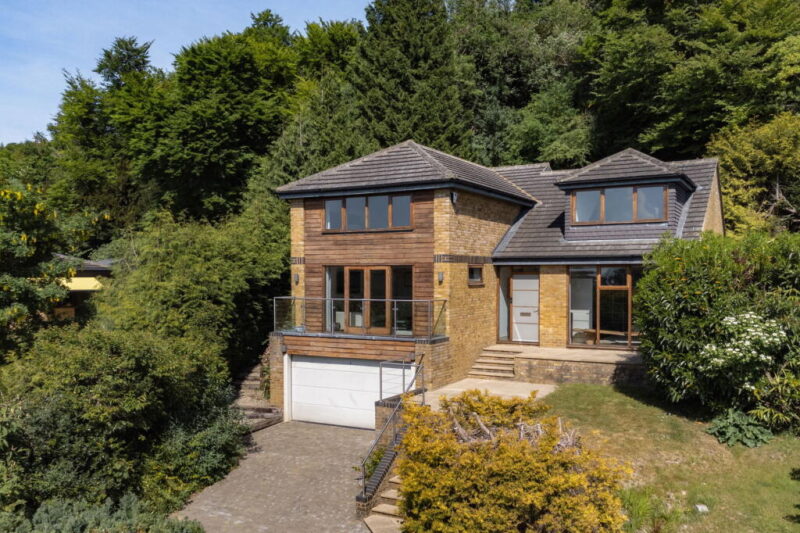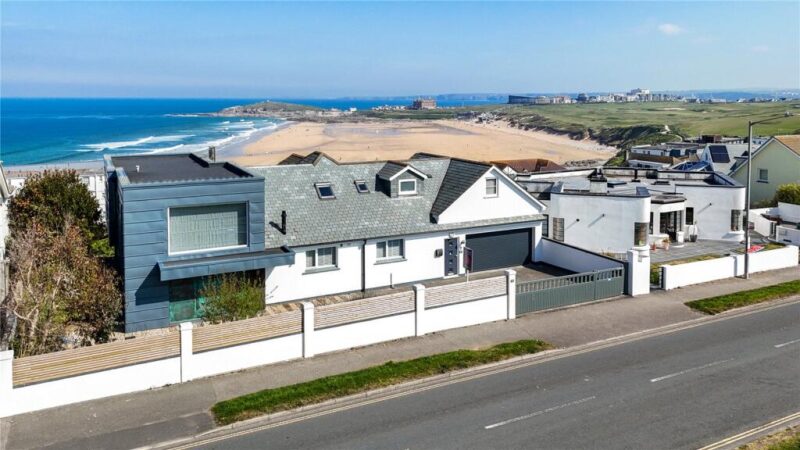1.7 million homes unable to improve energy efficiency to C rating
- Analysis of over 15 million homes across England & Wales by Rightmove has found that just under 1.7 million do not have the potential to improve higher than an Energy Performance Certificate (EPC) rating of between D and G
- Gwynedd in Wales has the highest proportion of homes with an EPC rating of D or below (77.4%), which could be reduced to 21.7% of homes if recommended improvements were made, according to the study
- Castle Point in Essex comes in second with 77.2% of homes rated D or below, though it has the potential to reduce to 13% of all homes
- Tower Hamlets in London has the lowest proportion of homes with a current EPC rating of D or below, at 27.4%
- Rightmove has calculated five of the most cost-effective ways that homeowners could boost the energy efficiency of their home, according to the recommended improvements in EPCs
Ahead of World Environment Day, new analysis has found that there are just under 1.7 million homes currently rated between D and G for energy efficiency that cannot be improved to reach a C rating.
The government’s current aspiration is to have as many homes as possible reach a C rating by 2035 in England and Wales, with an earlier target of 2030 for private rented homes.
The Energy Performance Certificate (EPC) study, out today from the UK’s biggest property website Rightmove, analysed the energy efficiency ratings of over 15 million homes.
EPCs display the current energy efficiency rating of a home and the potential rating the home could be awarded if recommended improvements were made.
Across England and Wales, 59% of homes have a D, E, F or G rating and there is the potential for this to be reduced to 11% of homes if recommended improvements were made.
Crawley has the potential to drop to the lowest proportion of homes with a rating of D or below if improvements were made, which would reduce the proportion from 47% to just 5%.
In Gwynedd in Wales there are 77.4% of homes with a rating of D or below, and this could only improve to 21.7% if recommended improvements were made.
Second highest is Castle Point in Essex where 77.2% are rated D or below but it has a better chance of more homes being improved, with 13% of homes unable to reach a C rating.
Tower Hamlets (27.4%), Hackney (39.2%) and Southwark (41.7%) are the top performers for the lowest proportion of properties with a current rating of D or below.
The study found that there are estimated to be a further 11 million homes in England and Wales that do not yet have an Energy Performance Certificate rating, likely as they haven’t been sold or let out since the certificates were introduced.
Using the recommendations and national average costs on the government’s EPC website, Rightmove has outlined below five of the most cost-effective improvements that homeowners could make to boost the energy efficiency of their home.
The most common improvement that is recommended in EPCs is to install solar panels, although these will cost thousands of pounds. The second most common recommendation, mentioned in over five million EPCs, is to switch to use low energy lighting. This is one of the cheapest ways that can help improve energy efficiency.
| Recommendation in EPC |
Average cost (nationally) |
| Insulating hot water cylinder | £23 |
| Low energy lighting in all areas | £38 |
| Draughtproofing single glazed windows | £100 |
| Increasing loft insulation | £223 |
| Upgrading heating controls | £400 |
Rightmove’s Director of Property Data Tim Bannister says: “It’s encouraging to see that there are some energy efficiency improvements that can cost less than £100, so it’s definitely worth checking your EPC if your home has one to see if there are small changes you could make to try and improve your rating. The bigger challenge is for those homes with much lower ratings that will cost a substantial amount of money to improve. There are a number of homeowners who don’t feel an urgent need to make changes now unless it makes a big difference to the cost of their household bills or if it’s going to make their home more attractive to a potential buyer if they’re planning to sell. It’s early days with some lenders now starting to introduce green mortgages as incentives, but homeowners need to be better informed that how green your home is will become increasingly important as we aim to move towards a net zero society, and they need more help to understand why making improvements are so important for the long term.”
Ten areas with the highest proportion of homes with an energy rating of D or below:
| Local authority |
% of homes that currently have an EPC rating D or below |
% of homes unable to meet EPC rating C
|
| Gwynedd | 77.4% | 21.7% |
| Castle Point | 77.2% | 13.0% |
| Pendle | 76.9% | 12.8% |
| Denbighshire | 74.6% | 14.8% |
| Ceredigion | 74.2% | 17.3% |
| Hyndburn | 74.2% | 10.9% |
| Staffordshire Moorlands | 73.8% | 11.6% |
| Burnley | 73.6% | 9.8% |
| Blackpool | 73.0% | 10.4% |
| Southend-on-Sea | 72.0% | 19.2% |
Ten areas with lowest proportion of homes with an energy rating of D or below:
| Local authority |
% of homes that currently have an EPC rating D or below |
% of homes unable to meet EPC rating C
|
| Tower Hamlets | 27.4% | 8.3% |
| Hackney | 39.2% | 11.1% |
| Southwark | 41.7% | 12.9% |
| Salford | 42.7% | 7.4% |
| Milton Keynes | 42.8% | 5.7% |
| Islington | 43.4% | 14.1% |
| Greenwich | 43.8% | 10.7% |
| Corby | 44.2% | 5.9% |
| Peterborough | 45.1% | 6.1% |
| Dartford | 46.2% | 7.2% |
Ten areas with the potential to have the lowest proportion of homes with an energy rating of D or below if improvements were made:
| Local authority |
% of homes that currently have an EPC rating D or below
|
% of homes unable to meet EPC rating C |
| Crawley | 46.6% | 4.7% |
| Milton Keynes | 42.8% | 5.7% |
| Telford and Wrekin | 46.9% | 5.8% |
| Sunderland | 56.6% | 5.8% |
| Corby | 44.2% | 5.9% |
| Knowsley | 48.8% | 5.9% |
| Peterborough | 45.1% | 6.1% |
| Eastleigh | 48.9% | 6.1% |
| Halton | 52.9% | 6.2% |
| Redditch | 55.5% | 6.3% |
ENDS
Notes to editor
EPC data analysed from the Ministry of Housing, Communities & Local Government.
You may also like
Contact our press team
Email: press@rightmove.co.uk
Financial PR team
Sodali: Rob Greening / Elly Williamson
Tel: 0207 250 1446
Email: rightmove@sodali.com





